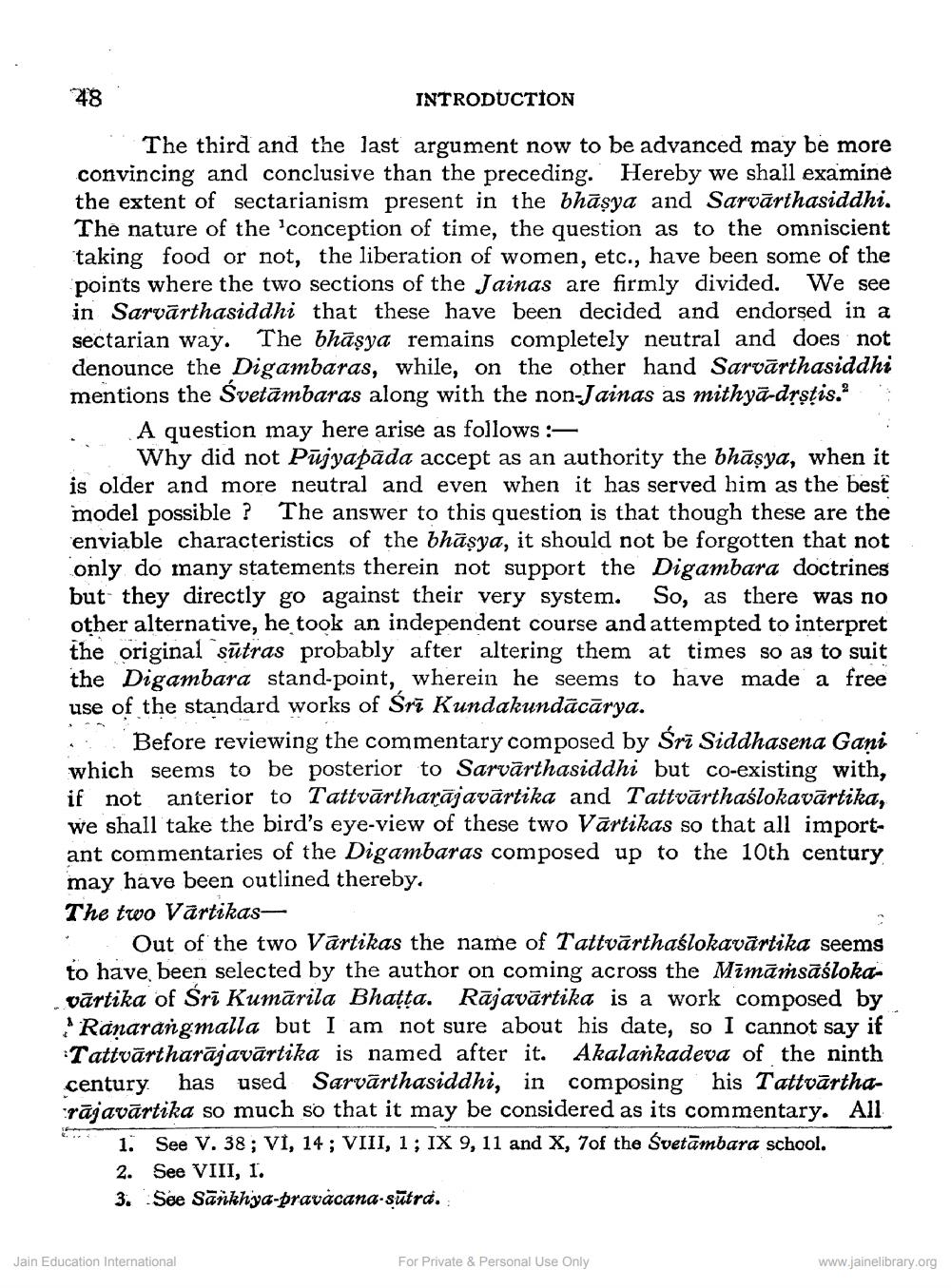________________
INTRODUCTION
The third and the last argument now to be advanced may be more convincing and conclusive than the preceding. Hereby we shall examine the extent of sectarianism present in the bhāsya and Sarvārthasiddhi, The nature of the conception of time, the question as to the omniscient taking food or not, the liberation of women, etc., have been some of the points where the two sections of the Jainas are firmly divided. We see in Sarvārthasiddhi that these have been decided and endorsed in a sectarian way. The bhāşya remains completely neutral and does not denounce the Digambaras, while, on the other hand Sarvārthasiddhi mentions the Svetāmbaras along with the non-Jainas as mithya-drstis. . A question may here arise as follows:
Why did not Pujyapāda accept as an authority the bhāşya, when it is older and more neutral and even when it has served him as the best model possible ? The answer to this question is that though these are the enviable characteristics of the bhāsya, it should not be forgotten that not only do many statements therein not support the Digambara doctrines but they directly go against their very system. So, as there was no other alternative, he took an independent course and attempted to interpret the original sūtras probably after altering them at times so as to suit the Digambara stand-point, wherein he seems to have made a free use of the standard works of Sri Kundakundācārya. * Before reviewing the commentary composed by Śrī Siddhasena Gani which seems to be posterior to Sarvārthasiddhi but co-existing with, if not anterior to Tattvārtharājavārtika and Tattvārthaílokavārtika, we shall take the bird's eye-view of these two Vārtikas so that all important commentaries of the Digambaras composed up to the 10th century may have been outlined thereby, The two Vārtikas
Out of the two Vārtikas the name of Tattvārthaílokavārtika seems to have been selected by the author on coming across the Mīmāṁsāśloka. vārtika of Sri Kumārila Bhatta. Rājavārtika is a work composed by Ranarangmalla but I am not sure about his date, so I cannot say if Tattvārtharājavārtika is named after it. Akalankadeva of the ninth century has used Sarvārthasiddhi, in composing his Tattvārtharājavārtika so much so that it may be considered as its commentary. All
1. See V. 38; VI, 14 ; VIII, 1; IX 9, 11 and X, 7of the Svetāmbara school. 2. See VIII, 1. 3. See Sānkhya-pravácana-sūtra.
Jain Education International
For Private & Personal Use Only
www.jainelibrary.org




